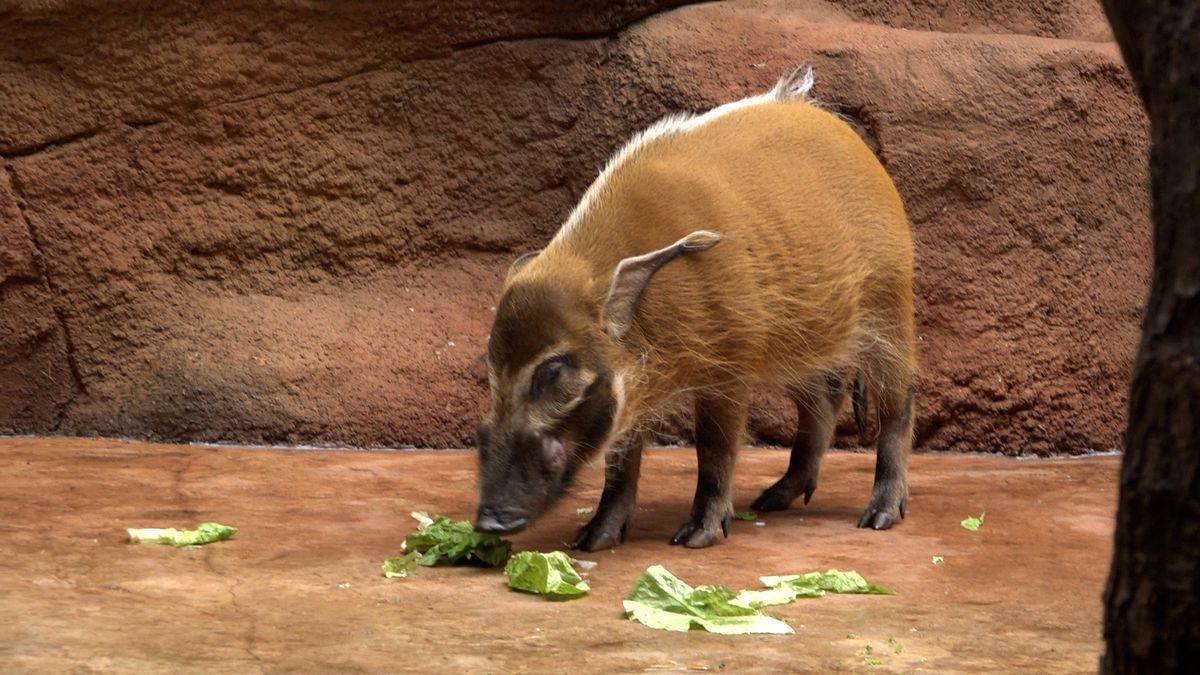Two young males arrived at the Prague Zoo late last year from their native zoo in the Netherlands. “So far they have had working names, we call them smaller and bigger according to their height. We will see if a different and better nickname can be found for them in the future,” said mammal curator Pavel Brandl.
The director of the zoo, Miroslav Bobek, responded to this. “If they had already introduced this name, I think it would be cruel to introduce another name. We give the public the opportunity to choose names for other animals, but if we did it here, breeders would still call them bigger and smaller,” he said to Novinkam.
Photo: Marek Tereba, Novinky
One of the brush bear brothers at the Prague Zoo
According to Miroslav Bobek, the brush beetle is a garden celebrity.
The brothers came to Prague only for exams. If they do well in the Prague park, local management plans to add females to it and eventually multiply the herd.
Big back
“In the past, we had toothbrushes in the African House next to the giraffes. We gave the harrows exposure of native scrub, which up to that point had only had half of them. As a result, there was a six-year interruption in their breeding,” explained Bobek.
“Free-living brush beetles are omnivores, eating everything from nuts to plant shoots to insects. However, in human care, they suffer from obesity, so their diet is very different. They mainly receive leafy vegetables, or from root vegetables the kind that contain little sugar.”
According to breeders, enrichment, that is, an element of play, is very important for them. “For pigs, being very intelligent animals, this is twice as important as for other animals,” said Brandl.
Photo: Marek Tereba, Novinky
Brush stroke enclosure at the Prague Zoo
“If we don’t offer it to them, they often find it themselves. Recently, for fun, they turned over the special rubber floor that was in the background,” said the farmer with a smile.
It works for those with monkeys
Cats and brush dogs are also found in the wild. There is also the possibility of a certain association, as the cat in the tree signaled to the brush beetle that the tree was bearing fruit. In other words, the brush can retreat to the tree and eat the fruit that falls after the sound of the cat,” explains Pavel Brandl.
The experience is also more interesting for visitors, as both the tree floor and the ground are inhabited.
Photo: Marek Tereba, Novinky
Brazz cat
Brooms are at home in central Africa in deciduous and mixed forests and shrubs. They live in groups led by a dominant male.
“The African brush warbler gets its name from its elongated earlobes topped with a brush of longer hairs. For now it is considered relatively abundant, but like the Brazz cat, it is often the prey of poachers. It is also persecuted by farmers in some areas for destroying their crops. Finally, the brush beetle also threatens environmental loss due to the expansion of human settlements in Central Africa, explains curator Jan Mengr.
The Prague Zoo’s newest pavilion – the Dja Nature Reserve – opened to visitors on September 28, 2022. Its main residents are a group of lowland gorilla families, accompanied by robed guere. As well as marsupials and brushbills, visitors will encounter African wasps and northern talapoins on their journey through the forest. The Cameroonian-style village is complemented by rat exhibits and giant canoes.
African bristlecones are also kept in zoos in Ostrava, Olomouc and Dvůr Králové.
Photo: Pavel Vlček, Ostrava zoo
Broom at the zoo in Ostrava

“Unapologetic social media guru. General reader. Incurable pop culture specialist.”







